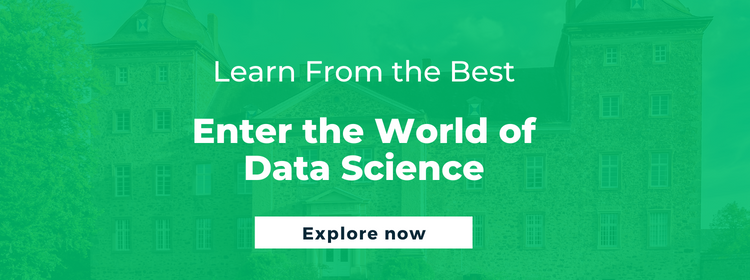A Comprehensive Guide on How to Ace a Data Architect Interview

Data architects are the senior visionaries in a company who align technology and enterprise framework with strategic business goals. According to the U.S. Bureau of Labor Statistics, data architects will witness a job growth of 9% between 2021 to 2031. Apart from this, as consumer-producer relationships become increasingly digitized, the skill sets required to ace a data architect’s portfolio have also evolved. So, what are recruiters looking for today? This blog answers all your queries about what to expect in a data architect interview.
What is the Interview Process for a Data Architect?
Data architect interview processes vary according to industry and can be quite extensive. However, most follow a specific paradigm that roughly corresponds to a company-specific hypothetical problem-solving round (technical investigation), coding skills round (technical expertise), and meeting with C-level executives who gauge the candidate’s leadership and communication skills.
How to Prepare for a Data Architect Interview?
To ace a data architect interview, it helps to have solid experience working within the data development life cycle. Policies of strict data governance, innovative ideas on data modeling, and end-to-end understanding of at least one data visualization tool are the essential competencies that you should acquire.
ALSO READ: How Lucrative are Data Architect Salary Packages in 2023
Common Data Architect Interview Questions
 Tell Me the Main Components of Data Architecture
Tell Me the Main Components of Data Architecture
The core components of most big data architectures include Data source, storage, batch processors, stream buffering, stream processing, analytical and relational data storing, multidimensional data modeling, and orchestration.
Tell Me the Difference Between a Relational Database and a NoSQL Database
A relational database uses tables, rows, and columns to store data. These databases use SQL for data management and support ACID guarantees. NoSQL databases work with non-relational data and do not use tables to store it. Instead, they use JSON documents to store unstructured and semi-structured data and favor horizontal scaling for cloud computing.
Tell Me the Challenges You Face When Developing Data Architecture
The challenges of developing data architecture typically are:
- Maintaining a strong and consistent data supply chain
- Integrating multi-type and multiple data sources
- Creating thorough data-cleansing infrastructure
- Lack of strict data governance
- A steady supply of data-literate professionals
- Issues of data gravity in hybrid data environments
Tell Me the Benefits of Using a NoSQL Database
A NoSQL database has several benefits.
- It facilitates easy schemes and field updates.
- Its scale-out architecture handles larger volumes of data.
- It works well with storing structured, semi-structured, and unstructured information.
- Cloud-based operations reduce downtime drastically.
- These databases are more user-friendly.
Tell Me About the Challenge of Managing Data Architecture
The challenges of managing data architecture include:
- Selecting the most appropriate data modeling techniques
- Choosing the appropriate stream processing systems to better integrate real-time data into data architecture
- Inducing data fabric architecture for a more holistic approach toward analyzed information
- Aligning data architecture with long-term business goals
Tell Me the Challenges You Face when Designing a Data Architecture
The challenges of designing a data architecture primarily involve:
- Creating the appropriate data flow diagrams
- Documentation such as Create, Read, Update, Delete (CRUD) matrix to map data usage for different company processes
- Securing the best data collection policies and standards
- Creating a sophisticated blueprint comprising the entire data lifecycle and how to affirm the same in real life
 What is a Data Access Layer?
What is a Data Access Layer?
The last layer of a data center’s three-tier architecture is known as the access layer. In data architecture, the access layer connects to all the actual servers and also maintains extra backup servers.
Tell Me the Most Important Skills for Data Architects
The most important skill is an extensive knowledge of systems development. Then comes innovative project management approaches, system development life cycle, data development life cycle, and data modeling that includes SQL development.
Tell Me the Challenges You Face When Working with Data Warehouses
The challenges of working with Enterprise Data Warehouses (EDW) are:
- Massive time and financial investment
- Requirement of extreme cross-functional efficiency
- Demands a conglomeration of tools for data management, integration with modern technologies such as data virtualization, massively parallel processing, and in-memory computing
- Lack of control over data quality and data sources
Tell Me the Best Ways to Ensure that Your Data is Secure
There are five major ways to futureproof your data:
- Use of data discovery to identify business-critical datasets and segregate them
- Strategies to prevent loss of sensitive data
- Built-in data protection features in storage systems
- Snapshots and other forms of backups
- Firewalls and stringent systemic authorization
How to Manage your Database with External Data Sources?
Managing databases is crucial for maintaining strong connectivity between the database and external sources. The connection information comprises all details of any data change within the database and it can be stored in different formats such as a Universal Data Connection (.udcx) file or Office Data Connection (.odc) file.
What is a Data Warehouse?
A data warehouse acts as the primary data repository which is used to analyze and glean actionable insights from different sources.
ALSO READ: Data Warehousing: Why it is Uber Popular in the Industry in 2022 and Beyond
What are Some of the Challenges You Face When Working with NoSQL Databases?
Some challenges of working with NoSQL databases are:
- Difficulties in determining the current value of a dataset object if information nodes overlap
- Data recovery
- A common occurrence of node failures during backups
- Block-level data integration is often compromised
What is a Data Dictionary?
A data dictionary comprises the entire set of definitions and attributes of each data element in the information system. It describes the purpose of the elements to facilitate correct interpretation and representation of the same.
What Questions Should Interviewees Ask at the End of the Interview?
These quick questions at the end of a data architecture interview will help candidates get a better understanding of the company’s long-term goals and workflow processes.
- What do you want me to focus on in the first 90 days of employment?
- Have you deployed the recent technology of data democratization and how do you propose we acclimatize to the AI-ready data architecture?
- What kind of skills is missing from the team which you might need me to plug in?
- What is the data cleaning technology used in the company?
- How does the company look at the shifts in data handling from on-premise to cloud-based architectures?
ALSO READ: Top 9 Roles to Pursue a Career in Data Science in 2022
Tips for Preparing for Your Data Architect Interview
Data architect interviews can get very technical but that’s not the end game. As recruiters look for multidimensional talent to fill up their workforce, here are some tips to remember:
- A thorough company and industry-specific knowledge is a must
- Get an in-depth understanding of the latest data visualization technologies
- Pay equal importance to mathematical brain teasers apart from questions about the market
- Thoroughly articulate your technical skills and an honest learning approach toward what you don’t know
- Be prepared for questions on soft skills such as leadership, collaboration, and communication qualities
The data architecture market is a booming industry. To prepare for a data architect interview, sharpen your skills, nurture your curiosity, and learn from the best global experts on data science with Emeritus’ comprehensive data science courses.
By Bishwadeep Mitra
















